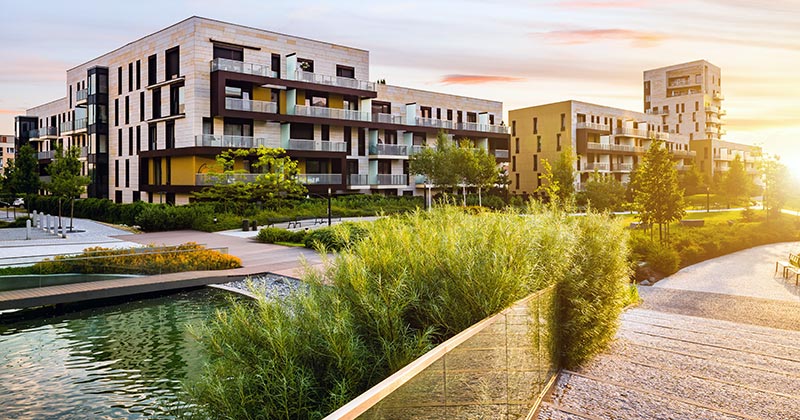Urban designers and urban planners both aim to create liveable, connected, and sustainable public spaces. Their goals are often similar, making it hard to tell their work apart.
Even so, these are distinct disciplines with different scopes and career paths. Each role requires a unique set of skills and qualifications.
While urban design and urban planning have a lot in common, they lead to different but equally rewarding professional paths. The design side is about as crafting the visual and experiential elements of spaces. In planning, the focus is on overarching strategies and regulations that shape the city’s growth.
Overview
Urban design and planning are essential in how we shape and experience our cities. While these disciplines often overlap, they have distinct objectives. Designers focus on tangible aspects of spaces, prioritizing functionality and aesthetics. Meanwhile, planners oversee the broader framework, ensuring city growth aligns with regulations and development policies.
Orcun Tonyali, a Harvard-educated innovator and founder with extensive experience in manufacturing, based out of Berlin, offers a unique perspective on this. Through his lens, urban designers are the “creators” of the city’s fabric. They intricately craft the aesthetic and functional qualities of public areas. Tonyali observes that designers “give the final form of several ideas,” breathing life into city elements, enhancing overall user interaction.
Urban planners, as Tonyali describes them, are like “analysts.” They lay out the big picture for cities. More than just design, they connect city growth with bigger plans, making sure it matches political and environmental goals. Based on data, their choices greatly affect the health, economy, and life of communities.
What are Urban Design and Planning?

Urban planning and urban design represent a formal and deliberate approach to managing community growth and development. Urban planners and designers help communities choose their futures rather than letting growth occur haphazardly. They design and facilitate the development of liveable communities in city and suburban areas.
Planning and design ensure that cities and towns have vibrant economies and communities, provide for a high quality of life, and are environmentally sustainable. Crafting successful plans requires a rounded understanding of the way in which societies, economies and environments operate and interact.
The overlapping fields but focus on different aspects of the planning process. Urban planners must take a high-level view and their work is more connected to business and infrastructure. Urban designers tend to be preoccupied with the practical and creative task of designing spaces and facilities.
What Does a Designer Do?

As an urban designer, you’re primarily concerned with designing spaces for aesthetic and functional purposes. You’ll help shape the lived experiences of people occupying public spaces to improve sustainability and quality of life.
Most of the work that urban designers do focuses on city features such as community facilities, infrastructure, landscapes, green spaces, and transport systems. Modern designers typically engage with these neighbourhoods in moulding an optimal user experience. Although, they might also contribute their user-centric creativity to the design of entire cities or communities.
Urban design courses develop hands-on skills like drawing, spatial analysis, and technical design. Additionally, professionals need to learn the interpersonal and diplomatic skills required to create structures that meet aesthetic, functional, and sometimes political objectives.
Related: What Does an Urban Designer Do?
What Does a Planner Do?

Urban planning (or ‘town planning’) is a strategic job concerned with planning urban spaces to meet political or regulatory goals. Where an urban designer is concerned with aesthetics and experiences, a planner works with laws, zones, policies, building codes, and standards.
Urban planning operates at a high level, especially in government-focused roles. A planner’s recommendations might have significant consequences for the health, social, and economic well-being of communities or entire cities. For example, decisions regarding the integration of natural systems, such as wetlands and green spaces, can influence local biodiversity, water management, and public health.
Becoming a planner may be ideal if you have a passion for improving community outcomes through good social planning. Advanced courses offer well-rounded training covering the policy and administrative skills planners use. Course content may include spatial analysis, environment laws and policies, urban redevelopment, community engagement, and some aspects of urban design.
Urban Design vs Master Planning
While both urban design and master planning play pivotal roles in shaping our environments, they tend to operate at different scales. Urban design focuses on the details, making our daily city experiences rich and meaningful. In contrast, master planning dreams big, plotting out the broad strokes of how vast spaces will evolve and function.
A master plan often provides a larger framework, including key boundaries and parameters, for designers to fill in the details. These plans can take the form of two-dimensional documents that codify information for land uses, heights, setbacks, and the like.
Alternatively, they can be comprehensive urban design documents that incorporate three-dimensional aspects such as shapes, views, and other specific requirements. These details help narrow down the design options left to the professionals responsible for actual developments. Architects and developers gain a clearer direction for their projects, ensuring a cohesive vision for the entire area.
Urban Design Skills and Careers

A modern urban designer has a firm grasp of technical tools like AutoCAD, SketchUp and GIS. In addition, design work traditionally requires excellent drawing and visualisation skills, and aspirants will typically have a healthy creative streak.
Because they are constantly looking ahead to possibilities in shaping the most optimal interaction with spaces, urban designers also tend to be visionaries. Their work helps them question conventional assumptions about city features and how people use them, and students can expect to hone this penchant in a Master’s of Urban Design.
In terms of soft skills, urban designers are great listeners. They are also detail-oriented and deliberate, which is critical when considering how the different parts of a prototype design might fit together.
Designer qualifications and career paths
Urban design courses commonly require a background in architecture, landscaping, or structure design/engineering. People with a prior qualification in strategic planning, environmental science, or civil and municipal engineering may also be preferred candidates.
A master’s degree in urban design opens up multiple potential career options in construction, public policy, and private development. For example, graduates in the field could hold positions as:
- Strategic Design Associate: You might work in a property development firm where you help visualise futuristic closed communities.
- Design Draftsperson: You’ll typically focus on technical drawing and documentation as a design draftsperson.
- Strategic Planner: This position combines elements of urban planning and design. You might work closely with an urban planner to ideate design elements that meet policy or regulatory objectives.
- Urban Designer: Professionals in this position may have responsibility for both ideation and implementation.
- Design Leader: You may head a design team or department within a private or public agency in this senior role.
Urban Planning Skills and Careers

Much like urban design, a career in urban planning requires some proficiency with technical tools like AutoCAD and GIS. Planners typically adopt a data-led approach to developing optimal community or city layouts. So, successful candidates will often be competent at data interpretation and visualisation.
Urban planning is also highly strategic, technical, and political. So communication and negotiation skills will be central to a successful career in this role.
As mentioned above, the program’s coursework will include instruction in building, social, and environmental laws and policies. Therefore, strong candidates must be adept at regulatory compliance and strategic planning.
Planner qualifications and career paths
A background in architecture is just as relevant here as it is in urban design. Although, people with experience in non-planning or construction courses may also be welcome due to the multidisciplinary nature of learning in urban planning.
Nonetheless, prior qualifications in business, engineering, or an undergraduate urban planning degree may be advantageous. Additionally, professionals in this discipline might require an undergraduate degree or masters in urban planning to join a professional association such as the Planning Institute of Australia.
Potential career paths for holders of a Masters in Urban Planning include:
- Development Manager: In this role, you might take point on development planning in a real estate or property development firm.
- Consultant: Consultancy is a common path for planners who develop niche expertise in sustainability, health, leisure, environment, etc.
- City Government Planner: Planners in this role have an opportunity to do meaningful work. For example, you could work on far-ranging government initiatives like the Melbourne Transport Strategy 2030.
- Research Associate: You could also bring your urban planning expertise to the research field in working to solve theoretical problems in city or community planning.
- Non-Profit Project Planner: Non-profit initiatives that involve building or improving communities with planned facilities are also a common career path.
Related: How to Become a Town Planner in Australia
Is a Masters Degree Worth It?

If you’re interested in one or both these careers, you have a range of urban design and planning courses to choose from. A specialised master’s degree can set you on a path to career success. Many designers and planners have launched their careers after first gaining experience in another field and then completing a relevant master’s.
For design work, the main value of a Master of Urban Design or similar is to learn crucial technical skills. Students study spatial analysis, hone their drawing techniques for urban layouts, and become adept with design software like AutoCAD and GIS. They also explore topics like urban morphology, sustainable design practices, and place-making strategies. With this knowledge, you will be well-prepared to design urban spaces that effectively balance aesthetics with practicality.
A Master of Urban Planning focuses on city and community development. Students gain insights into city redevelopment, spatial analysis, planning and environmental laws, urban design, and community engagement. Job opportunities for graduates include roles such as town planner, development assessor, strategic policy advisor, urban development advisor, and statutory planning consultant.
Related: What Is a Masters Degree?

Leave a Reply